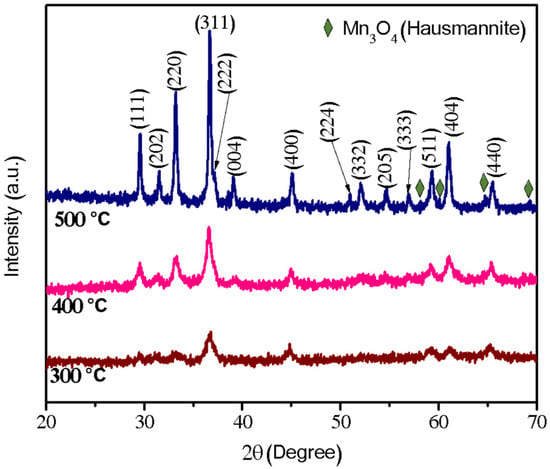- Article
Visible-Light Photocatalytic Degradation of Synthetic Dyes Using Spinel-Type CoMn2O4: Environmental Relevance and Human Water Rights Perspective
- Felipe Vázquez-Dávila,
- Miguel Ángel López-Álvarez and
- Pedro Ortega-Gudiño
- + 1 author
Water contamination by synthetic dyes is a pressing environmental and social issue, particularly in the textile industry, which is among the largest consumers of freshwater and sources of wastewater pollutants. Malachite green (MG), a synthetic triphenylmethane dye, was selected as a model contaminant due to its persistence, toxicity, and international regulatory restrictions. In this study, a spinel-type cobalt–manganese oxide (CoMn2O4) photocatalyst was synthesized by calcination at 500 °C and characterized through X-ray diffraction (XRD) and transmission electron microscopy (TEM), confirming the formation of the spinel phase with nanoscale morphology. Photocatalytic activity was evaluated under visible-light irradiation using UV-Vis spectrophotometry to monitor MG degradation. Control experiments and scavenger assays identified hydroxyl radicals (•OH), superoxide anions (O2−), and photogenerated holes (h+) as the main reactive species. The catalyst achieved over 90% dye removal within 300 min and retained high activity over four consecutive reuse cycles, with only a slight decrease in efficiency from 97% to 94%. These results confirm both the efficiency and stability of CoMn2O4 under visible light. The study underscores the potential of this material as a sustainable option for wastewater treatment while contributing to environmental governance and supporting the fulfillment of the Human Right to Water.
1 December 2025


